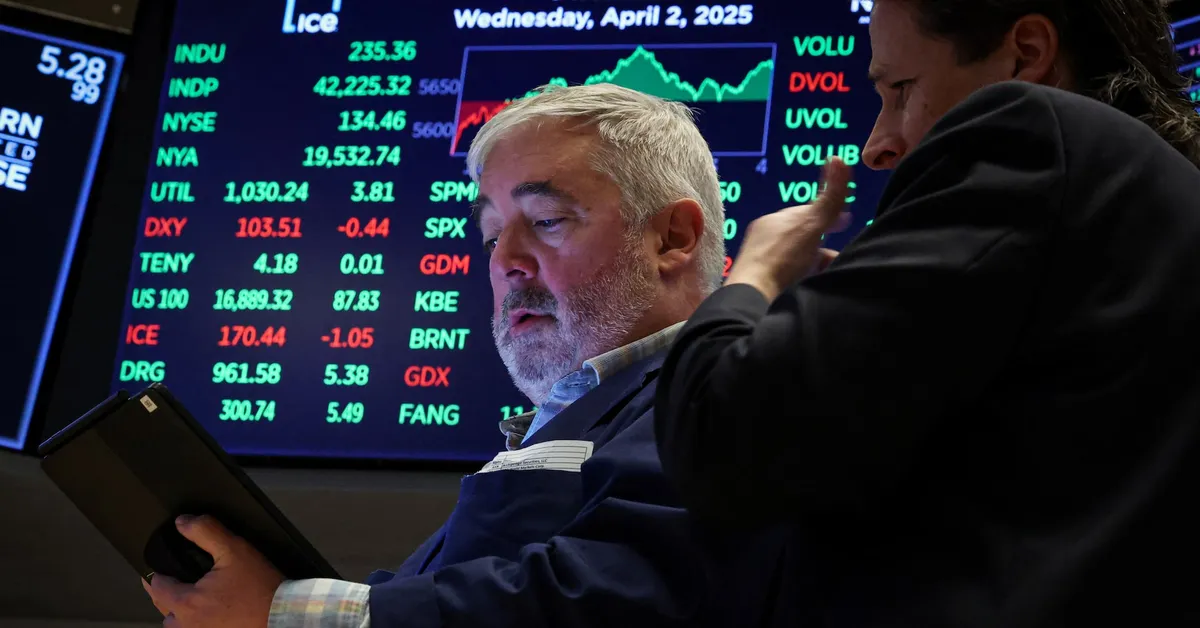
On April 3, U.S. stock index futures experienced a significant decline as President Donald Trump's sweeping tariffs on major trade partners ignited concerns over a potential full-blown trade war. This unexpected move has raised alarms regarding the risk of tipping the global economy into a recession. As a result, global stocks took a hit, government bonds saw a surge, and safe-haven gold reached a record high. The tariffs included a 10% levy on most goods imported into the United States, alongside much higher tariffs imposed on numerous rival nations.
By 07:08 a.m. ET (1208 GMT), futures tracking the S&P 500 fell by 3.33%, while Dow futures dropped 2.73%. Additionally, Nasdaq 100 e-minis tumbled by 3.83%, with significant losses seen in shares of major tech companies. The initial strike in this trade war has caused considerable anxiety among investors, leading to a broadly negative market sentiment.
Elias Haddad, a senior markets strategist at Brown Brothers Harriman, remarked, “This was the first bullet thrown in this trade war and it could get nasty, and that is spooking investors.” He highlighted that trading will likely remain under a heavy tone due to the heightened risks of either a recession or stagflation. Haddad further suggested that a market correction could stabilize once there is clear evidence indicating that the economy is not heading into a recession.
Futures associated with the U.S. small-cap Russell 2000 index plummeted by 4.5%, reflecting growing concerns about the overall health of the domestic economy. In light of these developments, traders have begun to ramp up expectations that the Federal Reserve will implement at least three interest rate cuts this year. The prospect of a fourth cut by year-end is also becoming increasingly plausible.
This situation heightens the importance of Federal Reserve Chair Jerome Powell's upcoming speech on Friday, which is anticipated to provide critical insights into the U.S. economy's health and the future trajectory of interest rates. Haddad noted that expectations of looser monetary policy and potential fiscal stimulus from the Trump administration's forthcoming tax cut plan could offer some support to equity markets.
As investors brace for further developments, all eyes are on the U.S. non-farm payrolls report scheduled for release on Friday. Additionally, data regarding weekly jobless claims and the activity level of the U.S. services sector are also set to be released later in the day. These economic indicators will be crucial in gauging the overall economic landscape amidst the uncertainties brought about by the recent tariff announcements.
Reporting by Sruthi Shankar and Pranav Kashyap in Bengaluru; Editing by Saumyadeb Chakrabarty and Anil D'Silva.